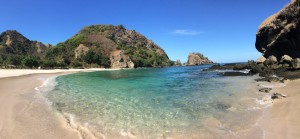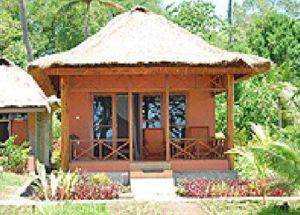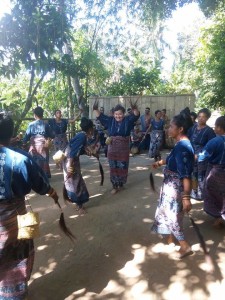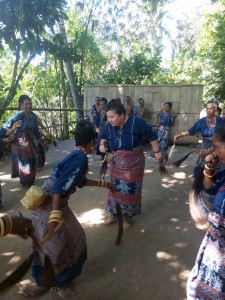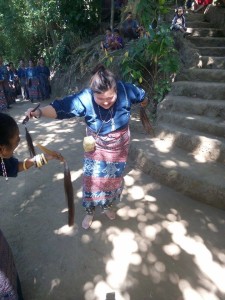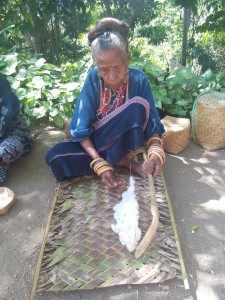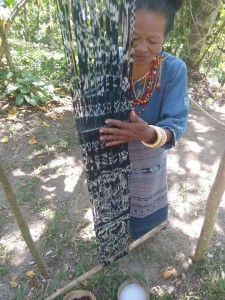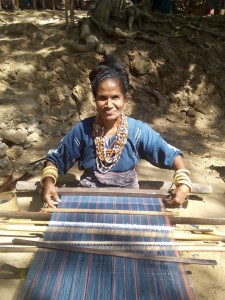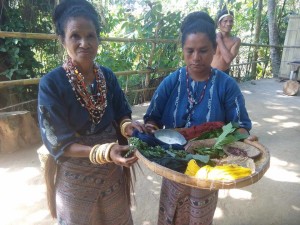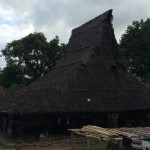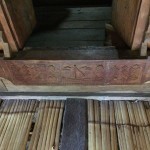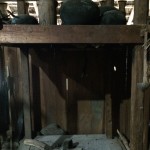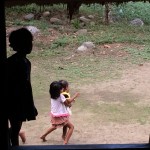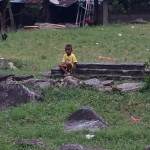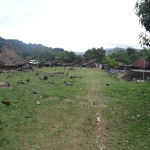Flores is my Indonesia swan song – my last major trip in the archipelago nation before heading back to the U.S. I’m just barely staying true to Weekend Crossroad’s philosophy, as between its immense size and still developing infrastructure, Flores requires considerably more a long weekend to explore properly. However, those with time constraints can always choose a couple of highlights to enjoy, as illustrated in the following multi-part Flores series. Alternatively, one can choose to take an 8-10 day overland trip from Maumere to Labuan Bajo, which covers roughly two-thirds of the island.
This is Part two of eight. Part one, Flores 101: How, When and Why to Go, can be accessed here.
For me, the highlights of Sikka regency were the vibrant ceremony at Watublapi Village just outside of Maumere, and Koka beach, whose crystal clear waters and white sands
Heading out of Maumere’s Frans Seda airport, I see a man with a gap-toothed grin holding a sign with a rough approximation of my name, featuring many additional consonants that give it an almost Icelandic flair. (Speaking of names, the airport honors the rather grandly named Franciscus Xaverius Seda, the most famous local son who served in various ministerial positions under President Suharto. I later find myself fascinated by Florensian names, many of which, like Mr. Seda’s harken back to the early Christian era in Rome.)
As I check in to my hotel in the late afternoon, I have absolutely nothing on my agenda. This is fine with me, given that I have a rather packed 10 days ahead. Indeed, there is not much to do in Maumere – despite its status as Flores’s largest town – certainly not within walking distance, anyway. For those who are so inclined, there are a number of diving resorts and operators in the area. Avid divers, however, may be disappointed to learn that between natural disasters, pollution, and the devastating practice of dynamite fishing, much of the coral in the area has been destroyed.
I am told that there is a special buffet dinner that starts at 7, and I settle into my beach bungalow with the best of intentions to rest my eyes for just a few minutes. At 7:45 I am jolted awake by lively folk music, and realize that I have overslept. The adage “you snooze you lose” proved painfully true in this instance, as by the time I stumble into the dining room there is little more than white rice and a few sad looking pieces of fish remaining. (Unfortunately, this is an all-too-common phenomenon for travelers in the region!)
At dinner, I am greeted by a florid-faced white-haired man who introduces himself as Father Heinrich. He welcomes me, and explains that the evening’s celebration is in honor of his 86th birthday. I am duly impressed and make the appropriate congratulatory remarks. Throughout my trip I note that nearly all of the higher-end tourist accommodations are expat-owned and managed, and a significant number of these individuals originally came to Flores as Catholic missionaries with a particular focus on bolstering the weak local education system.
The next morning, I am greeted by my guide and partner-in-crime for the next week, Janny (short for Johanes Marcus!). He explains that we will interact with a number of different ethnic groups throughout the week, and our first stop will be the Sikka village of Watublapi. Most tourists only stop by briefly to check out the village’s renowed ikat weaving. For me, however, there is a special surprise in store.
“Oh, helelarak! Oh, helelarak!”” Welcome, welcome! The village elder and traditionally dressed women sing and dance in a welcome ceremony to Watublapi Village in Sikka, Flores, East Nusa Tenggara, Indonesia.
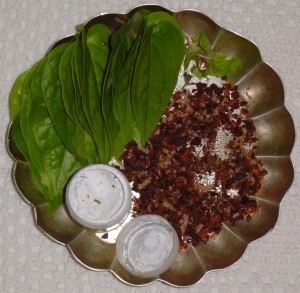
Sirih pining, or betel nut, chewing, is a tradition that goes back thousands of years. Glad I tried it — but definitely not a fan. . .
After the welcoming ceremony, we are invited to eat betel nut (dipped in limestone powder crushed from local oysters), sip local arak palm wine (at 10 am!) and smoke home-grown, hand-rolled cigarettes. The former was not particularly appetizing, and happily, the small nibble that I took did not dye my teeth the dreaded red of the lifelong betel chewer. The plant itself symbolizes humility, as it grows freely without damaging its host plant. It is believed to have medicinal effects from preventing tooth decay and ad breath to curing dysentery, intestinal worms, and scabies! It is actually the lime that causes tooth reddening. However, the delicious steamed purple rice cakes that followed more than offset this!
Then the entertainment began – for both them AND me. Each dance served a specific purpose – for example, highlighting the agility of a man and the skills of a woman preparing for marriage, or keeping villagers on track and high spirited during various stages of the harvest.
To my surprise they then dressed me in a beautiful sarong and blouse, explaining the significance of each. The longer the sleeves and the greater the number of bracelets, the older you are. Elderly women wear two sarongs, while others wear only one. Deeming me middle-aged (almost!), they present me with a three-quarters sleeve blue blouse, a red and blue woven sarong, and two bracelets. (I would have been offered more bracelets had I been married/borne children, and I find my inner competitive streak inadvertently acting up!)
Then the fun / my abject humiliation begins. Resembling something between a beached whale, a dying hippopotamus, and a stampeding elephant, I emulate the graceful dancers in what can only be described as a sad parody. I rock the singing / yelling component of the performance though, and with great pride I am affirmed as a bona fide Watublapi! Happily, there are no other tourists (or worse yet, close friends/relatives of mine!) to witness this spectacle.
- I really. . .
- don’t know. . .
- what I’m doing. . .
Next, I join two other tourists (who do not know what they had missed!) in watching the women of the village demonstrate how they harvest cotton, make natural dyes, spin thread and weave beautiful textiles using a traditional ikat method. Ikat means “to tie,” and in this process, individual threads are tied to create vibrant patterns before being immersed in dye pots, threaded onto a lap loom, and woven in into cloth. This is not merely a demonstration for tourists, as textiles form a significant source of income for the village.
- Preparation of locally-grown cotton.
- The intricate process of ikat tying.
- Weaving.
- Sadly, natural dyes are a dying art (no pun intended, really!) Turmeric root is used for vibrant yellow, morinda root for the iconic brick red hue, indigo for blues and purples, and mango leaves for green. Everything is locally grown.
A cynic might describe the experience as “a tourist trap,” but there is genuine joy in the faces of the performers, an unfeigned solemnity to the ceremonies, and the barrels of unfettered belly laughs from the local children as they watch me try (and fail!) to emulate the grace of the dancers. The weavings are beautiful and truly one-of-a-kind, offered at reasonable prices given the labor-intensive process involved in creating each one. (I ended up walking out with two purchased weavings as well as a scarf and a woven thread bracelet gifted to me by my new BFF Karolina.
Our next stop is Koka Beach – also known locally as the “twin beach.” I am initially skeptical when in the parking area I am greeted by the unfortunately all-too-common Indonesia vista of piles of rubbish and smoky cook-outs. The local children cheerfully frolicking in the water are fun to watch though. But then Janny beckons to me. “Come this way,” he says. We cross an expanse of sand to an entirely new world. For the twin beach is a broad expanse of white sand and clear water with only a single lone fisherman in sight. The vista took my breath away. Though time is allotted for swimming, the idea of sitting in a wet swim suit for the remaining 3+ hour drive to Kelimutu is less than appealing. So I am happy to explore on foot, fully clothed, the untouched beauty of this secret corner.
Our last stop for the day is at the Lio village of Woloraru, primarily to take a look at the distinctive Lio architecture and motifs. Woloraru is not a typical tourist village, and truth be told is strewn with litter and actually somewhat depressing. It is a good chance to see distinctive Lio architecture up close, however, and one of the villagers kindly lets us enter her house to see how they live.
- Lio architecture is divided into masculine houses keda kanga and female houses sao ria, which typically depict breasts in the front.
- Boat motifs feature prominently in Lio architecture, symbolizing the long journey of their ancestors, who are believed to have originated from India.
- The kitchen is the heart of the home.
- Children play outside the house of the mosolaki, or clan leader.ouse of the
- A young boy sits among spirit stones which commemorate village ancestors.
- The village has a slighly desolate feel. . .
Finally, several podcasts later, we pull into the entrance of the Kelimutu Eco Lodge where we are greeted emphatically by a guard. “It’s the strangest thing,” says Janny. “A few weeks ago, he was in a terrible motorcycle crash which put him in a coma for a several days. Things looked hopeless. But then an MRI revealed a unique outline on his brain in the shape of Jesus Christ. The doctors said they had never seen anything like it. And the next day, he woke up and was fine!” Though I am not sure what to make of this fact-meets-fiction tale, it is nevertheless a fascinating to consider, and serves as the perfect set up for the mystical regency of Ende and the haunting beauty of Mount Kelimutu.
Continue on to part three here.







